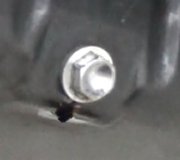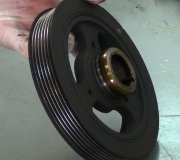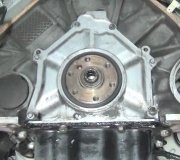Here are the things you have to check:
1. Clean all the parts thoroughly. The mating surface of the oil pump should be smooth. Replace the pump cover if is scratched or grooved.
2. Lay a straightedge across the pump cover surface. If a 0.001 in. (0.025mm) feeler gauge can be inserted between the cover and the straight edge, the cover should be replaced.
3. Measure the thickness and diameter of the outer rotor. If the outer rotor thickness measures 0.370 in. (9.40mm) or less, or if the diameter is 3.148 in. (79.95mm) or less, replace the outer rotor.
4. If the inner rotor measures 0.370 in. (9.40mm) or less, replace the inner rotor.
5. Slide the outer rotor into the pump housing, press it to one side with your fingers and measure the clearance between the rotor and the housing. If the measurement is 0.015 in. (0.39mm) or more, replace the housing only if the outer rotor is within specification.
6. Install the inner rotor into the pump housing. If the clearance between the inner and the outer rotors is 0.008 in. (0.203mm) or more, replace both rotors.
7. Place a straightedge across the face of the pump housing, between the bolt holes. If a feeler gauge of 0.004 in. (0.102mm), or more can be inserted between the rotors and the straightedge, replace the pump assembly, ONLY if the rotors are within specifications.
8. Inspect the oil pressure relief valve plunger for scoring and free operation in its bore. Small marks may be removed with 400 grit wet or dry sandpaper.
9. The relief valve spring has a free length of approximately 2.39 inches (60.7mm). It should test between 18-19 pounds when compressed to 1.60 inches (40.5mm). Replace the spring that fails to meet specifications.
10. If the oil pressure is low and the pump is within specifications, inspect for worn engine bearings or other reasons for the oil pressure loss.
SPONSORED LINKS
Friday, August 13th, 2010 AT 6:27 PM




